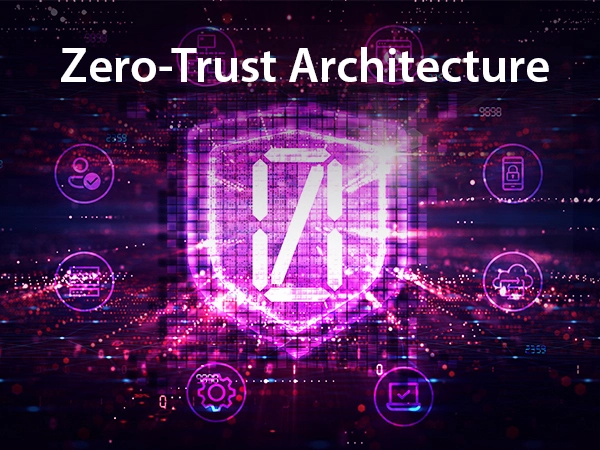Index
- Introduction
- The Rise of Virtualization in Modern IT
- Understanding Virtual Server Security Risks
- Importance of Virtually Patching Vulnerabilities
- Key Components of Virtual Server Protection
- Choosing the Right Virtual Server Protection Software
- Best Practices for Virtual Server Protection
- Securing Virtual Application Servers
- Future Trends in Virtual Server Protection
- Conclusion
- FAQs
Virtual server technology is especially important in the current threat landscape, where evolving risks constantly challenge cybersecurity. This technology maximizes efficiency by allowing multiple virtual servers to function on a physical one. Virtual servers house crucial data and applications. Securing them is essential to protect against data compromises, system outages, and unauthorized access. Delve deeper into this article to discover details about virtual server protection.
The Rise of Virtualization in Modern IT
Virtualization technology has revolutionized modern IT. It allows you to create virtual copies of servers, storage, networks, and entire operating systems. These virtual replicas offer numerous benefits.
Virtual servers and applications improve scalability. You can allocate resources on the fly, adapting to changing demands.
Virtualization also provides flexibility. You can quickly create and deploy new servers and applications without physical hardware. By bringing together multiple virtual servers on a single physical one, virtualization optimizes resources and lowers costs.
Organizations make the transition to virtualized environments to capitalize on these benefits. Therefore, it is imperative to implement comprehensive security protocols to safeguard virtualized environments from evolving threats.
Understanding Virtual Server Security Risks
Organizations need to virtually patch vulnerabilities like the following:
- Virtual servers are prone to malicious software attacks. They can jeopardize the integrity of data, steal confidential information, or interfere with operations.
- Unauthorized entry into virtual servers can lead to data breaches. It can contribute to the leakage of sensitive information, financial harm, and harm to reputation.
- Workers or individuals with special access to virtual servers may deliberately or accidentally misuse their privileges. It will result in leaks of data, sabotage, or other security incidents.
- Weak entry controls or misconfigurations can enable unauthorized persons or entities to access virtual servers. It can contribute to data loss, disruptions in service, or system compromise.
Security breaches could lead to financial losses due to fines, legal expenses, and loss of consumer trust. Moreover, they could bring about operational interruptions, downtime, and damage to the organization’s reputation. In particular cases, the effects of a security breach might be permanent, leading to lasting damage to the business’s sustainability and competitiveness.
Importance of Virtually Patching Vulnerabilities
Software flaws in virtual server settings create significant risks to security and data reliability. Hackers can use these flaws to get unauthorized access, run malicious code, or cause system disruption. Software defects, incorrect configurations, and obsolete components are common sources of vulnerabilities.
Applying patches in virtualized environments comes with difficulties. Managing patches across multiple virtual machines can be difficult and lengthy, especially in large-scale environments.
Patching can necessitate taking VMs offline, resulting in downtime and service disruptions. Furthermore, coordinating patch deployment across different virtualization platforms and ensuring compatibility can be challenging.
Virtual patching allows you to apply security fixes to your network or applications without altering the virtual machines or servers below them. Instead of patching each VM individually, virtual patching solutions examine network traffic and use patches or security rules to block known vulnerabilities.
Virtual patching is useful because it gives you immediate protection against threats without any downtime or reconfiguring. It also helps organizations keep up with the latest threats by quickly releasing security updates and minimizing the time attackers have to exploit vulnerabilities. Virtual patching also works with traditional patch management.
Key Components of Virtual Server Protection
Securing digital servers requires implementing a comprehensive array of security measures to protect against various risks. Essential elements of digital server security include:
● Firewalls
They manage and supervise incoming and outgoing network traffic to block unauthorized access and defend against malicious activities. Digital firewalls can be installed at the network boundary and within virtualized settings to enforce access rules and filter traffic among virtual components.
● Intrusion Detection/Prevention Systems (IDS/IPS)
IDS/IPS solutions track network traffic for suspicious behavior or recognized attack signs. They can identify and prevent malicious activities in real time, aiding in the prevention of unauthorized access, data breaches, and other security incidents.
● Antivirus Programs
Antivirus programs scan digital servers for malware, viruses, and other harmful software to identify and eliminate threats before they can cause damage. Regular updates and scans are crucial for ensuring effective protection against evolving threats.
● Encryption
Encryption safeguards data confidentiality by transforming sensitive information into unreadable code. Implementing encryption for data at rest and in transit helps mitigate the risk of data breaches and unauthorized access.
● Network Segmentation
It splits digital server environments into distinct zones or sections to control and limit access to sensitive resources. By segregating vital systems and restricting communication between sections, network separation helps contain potential security breaches and reduce the impact of security incidents.
● Access Management Policies
Access management policies specify who can access specific resources and what activities they are allowed to carry out. Role-based access management (RBAC), the principle of least privilege, and multi-factor authentication (MFA) are commonly utilized to enforce access management policies and prevent unauthorized access to digital servers and sensitive data.
● Morphisec Keep
Morphisec Keep offers advanced threat prevention and endpoint security for digital servers, using cutting-edge technologies like Moving Target Defense (MTD) to proactively defend against zero-day attacks and complex threats. Integrating Morphisec Keep into digital server security strategies enhances security readiness and helps effectively mitigate emerging threats.
Choosing the Right Virtual Server Protection Software
Factors to consider when selecting virtual server protection solutions
When choosing software to protect virtual servers, it is important to consider various factors to ensure that the selected solution meets the organization’s security needs and infrastructure requirements. Some key factors to keep in mind are:
- Compatibility and Incorporation: It is essential to confirm that the virtual server protection software is compatible with the organization’s virtualization platform and can easily integrate with existing security tools and management systems.
- Security Features: Assess the security capabilities of the solution, including firewall protection, intrusion detection/prevention, antivirus, encryption, and vulnerability management. Seek solutions that offer comprehensive protection against a wide range of threats and vulnerabilities.
- Performance and Scalability: Evaluate how the virtual server protection software impacts the performance of virtualized workloads and infrastructure resources. Look for solutions that are lightweight, scalable, and capable of securing large virtual server deployments without sacrificing performance.
- Administration and Management: Consider the ease of deployment, configuration, and management of the virtual server protection software. Look for centralized management consoles, automation features, and support for policy-based management to streamline security operations and reduce administrative tasks.
- Compliance and Reporting: Ensure that the virtual server protection software meets compliance requirements relevant to the organization’s industry and regulatory environment. Look for solutions that support reporting and auditing capabilities to demonstrate compliance with security standards and regulations.
- Support and Maintenance: Evaluate the reputation of the vendor in terms of customer support, responsiveness, and ongoing maintenance of the virtual server protection software. Choose vendors that provide timely updates, patches, and security advisories to address emerging threats and vulnerabilities.
Comparison of leading virtual server protection software and applications
- VMware NSX: Advanced network virtualization and security controls, like micro-segmentation, firewalls, and network monitoring.
- Trend Micro Deep Security: Comprehensive security for virtual environments, with features like intrusion detection, antivirus, monitoring, and log analysis.
- Bitdefender GravityZone: Endpoint security and advanced threat protection for virtual servers, including antivirus, anti-malware, and suspicious activity analysis.
- Sophos Intercept X for Server: Next-generation endpoint protection for virtual servers, including anti-ransomware, exploit prevention, and advanced machine learning technology.
Best Practices for Virtual Server Protection
Improving the security stance of virtual servers involves incorporating a series of top practices to reduce risks and safeguard vital resources. Organizations can fortify their security stance by adhering to these top practices for securing virtual servers. Several crucial recommendations for securing virtual servers are as follows:
● Regular Security Evaluations and Inspections
Conduct routine security evaluations and inspections of virtual environments to pinpoint vulnerabilities, configuration errors, and potential security loopholes. Perform penetration tests, vulnerability scans, and security assessments to evaluate security measures and ensure adherence to security protocols and guidelines.
● Encryption and Data Security
Introduce encryption for data both at rest and in transit to shield sensitive information from unauthorized access and interception. Encryption technologies like TLS/SSL, IPsec, and disk encryption are used to secure data transmissions, storage, and backups.
● Endpoint Protection
Deploy endpoint protection solutions on a virtual application server to defend against malware, viruses, and other malicious threats. Utilize antivirus programs, endpoint detection and response (EDR) solutions, and behavior-based analysis to detect and prevent security breaches on virtual server endpoints.
● Employee Education and Awareness
Offer regular training and awareness initiatives to educate staff on security best practices, policies, and procedures for safeguarding virtual servers. Train employees to identify and respond to security threats, phishing attacks, and social engineering tactics to prevent security breaches and data leaks.
● Response to Incidents and Recovery from Disasters
Establish and implement plans for responding to security incidents and recovering from disasters to swiftly address security breaches and minimize their impact on virtual environments. Develop protocols for detecting incidents, containing them, eradicating threats, and recovering data to reduce downtime and data loss.
Securing Virtual Application Servers
Some specific considerations for securing virtual application servers are as follows:
- Code Reviews: Ensuring the security of virtual server protection app code is crucial in today’s digital landscape. Developers must adhere to security guidelines, avoid common coding mistakes, and sanitize input to prevent harmful attacks.
- WAFs: Web Application Firewalls are important in protecting against common web application attacks. A layer of defense is added to virtual application servers by deploying WAFs. WAFs analyze and filter incoming HTTP traffic, blocking malicious requests and payloads. They also enforce security policies to prevent the exploitation of known vulnerabilities.
- Logging and Monitoring: Implementing comprehensive monitoring and logging mechanisms is key to detecting and responding to real-time suspicious activities and security incidents. By monitoring server logs, network traffic, and application behavior, signs of unauthorized access, abnormal behavior, or security breaches can be identified. Intrusion detection systems (IDS) and security information and event management (SIEM) tools can be utilized to correlate and analyze security events and alerts effectively.
Future Trends in Virtual Server Protection
In the constantly changing realm of safeguarding virtual servers, numerous developments influence what lies ahead. Improved automation and artificial intelligence-driven solutions are set to play a crucial role in quickly detecting and addressing risks. The incorporation of cutting-edge encryption techniques and decentralized structures will enhance the security of data.
Conclusion
In today’s tech-savvy world, where businesses widely use virtual servers, protecting them is essential for keeping vital assets and information safe. As virtualized infrastructures become more prevalent, organizations must ensure the integrity of these servers. By prioritizing virtual server protection, organizations can minimize cyber risks and protect against various threats. So, it’s highly recommended that organizations prioritize virtual server security and stay vigilant in addressing the ever-changing cyber threats.











